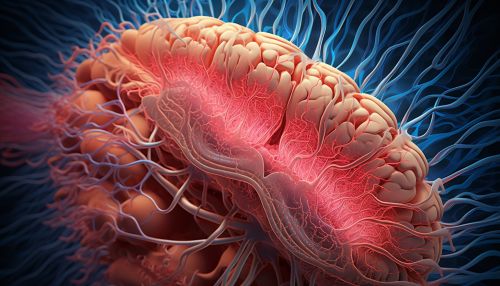Central Nervous System
Anatomy of the Central Nervous System
The central nervous system (CNS) is composed of two main components: the brain and the spinal cord. These structures are encased and protected by the cranium and the vertebral column, respectively. The brain is the primary control center of the body, while the spinal cord is the main pathway for information exchange between the brain and the rest of the body.


The brain is divided into several regions, each with specific functions. These include the cerebrum, cerebellum, and brainstem. The cerebrum, the largest part of the brain, is responsible for higher cognitive functions, such as thinking, learning, and consciousness. The cerebellum coordinates motor control and balance, while the brainstem controls vital functions like heart rate and breathing.
The spinal cord, a long, thin, tubular structure, extends from the medulla oblongata in the brainstem to the lumbar region of the vertebral column. It contains neural circuits that control reflexes and transmit signals between the brain and the rest of the body.
Functions of the Central Nervous System
The CNS plays a crucial role in the control of behavior and the regulation of the body's internal environment. It interprets incoming sensory information and responds by initiating appropriate motor responses.
Sensory Processing
The CNS receives sensory information from the peripheral nervous system (PNS). This information can come from various sensory modalities, including visual, auditory, tactile, olfactory, and gustatory stimuli. The CNS processes this information and creates a coherent perceptual representation of the world.
Motor Control
The CNS also controls the activity of all parts of the body. This is achieved through the initiation and coordination of motor commands. The cerebrum, particularly the motor cortex, is involved in the planning and execution of voluntary movements. The cerebellum and the spinal cord play key roles in the coordination and fine-tuning of these movements.
Homeostatic Regulation
The CNS is involved in the regulation of the body's internal environment, a process known as homeostasis. This includes the control of body temperature, blood pressure, and blood glucose levels. The hypothalamus, a small region in the brain, plays a crucial role in this process.
Pathology of the Central Nervous System
Various diseases and conditions can affect the CNS, including neurodegenerative diseases, infections, tumors, and traumatic injuries.
Neurodegenerative Diseases
Neurodegenerative diseases are characterized by the progressive loss of neurons in the CNS. Examples include Alzheimer's disease, Parkinson's disease, and amyotrophic lateral sclerosis (ALS). These diseases are typically associated with aging and can lead to significant cognitive and motor impairment.
Infections
The CNS can be affected by various infectious agents, including bacteria, viruses, and fungi. These can lead to conditions such as meningitis and encephalitis, which are characterized by inflammation of the CNS.
Tumors
Tumors can also occur in the CNS. These can be benign or malignant and can cause a variety of symptoms, depending on their location and size. Examples include gliomas, meningiomas, and neuroblastomas.
Traumatic Injuries
Traumatic injuries to the CNS, such as traumatic brain injury (TBI) and spinal cord injury, can result in significant disability. These injuries can cause a variety of symptoms, including cognitive impairment, motor deficits, and sensory loss.
